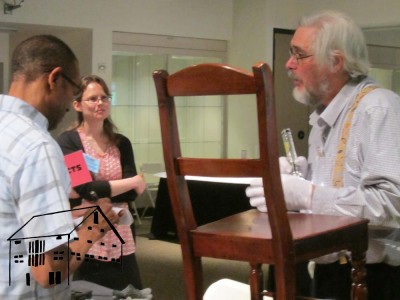Teaching Moments
This past weekend I was in Ft. Lauderdale, Florida, participating for the eighth time (over five years) as an artifact reviewer for the “Saving Our Treasures” program” of the Smithsonian’s National Museum of African American Heritage and Culture. Even though I am retired from SI they asked me to come back as a contributor, and since I have always enjoyed working with those colleagues I asked my wife about it. I am not especially a “people person” and do not like to travel, so I was somewhat ambivalent. Her response was enthusiastic. “Are you kidding? A trip to South Florida in January? I’d say ‘Yes’!” So off we went.
In these events local residents are encouraged to bring in a few of their family treasures to get preservation and historical information about them. We did not provide any value assessments or appraisals, with only one exception this weekend when we advised one guest to insure a painting for substantially more value than he was considering.
My fellow reviewers and I always enjoy these teaching opportunities, helping folks understand their artifacts, and the histories around them. This appears to be also true for both the guests and the younger museum staff, many of whom are just beginning their careers and seem to enjoy listening in on the conversations between the visitors and the old coots like me who have in some cases been looking at artifacts for most of a half century. My role is to provide whatever technical information about the artifacts I can discern using my standard toolkit of a headloop or surgical binocular , ruler, and a UV-vis flashlight – what they are and what they are made of, what their general manufacturing technology was, what condition they are in, and how to best preserve them.
The line-up of fellow artifactualists makes for a delightful weekend of artifact-looking and interactions, and I am pretty much assigned almost any kind of three-dimensional artifacts to examine. Coins, china, icons, dolls, cameras, furniture, paintings, ivories, plastics, jewelry, lamps, clocks, etc. One of the most unusual things I saw this weekend was an early electric iron, not in itself especially compelling. But, get this – the iron was a 250-volt unit! I’d never even heard of a 250-volt electrical grid, and could provide little if any historical-technological context for it. But there it was.
The furniture for the weekend was pretty scarce, but in this instance the very best was saved for last as a guest has two pieces of handmade furniture from Jamaica that had passed down through many generations. One chair was a hand-made side chair fashioned to mimic a standard c.1900 mail-order-catalog purchase, complete with detailed hand carved designs to imitate die-stamped embossing. It was peculiar to find a chair that from every gross feature could have come from the Sears catalog of 1890, yet was indisputably hand made.
A second chair from the same guest was a simple, true mahogany “church chair” containing all the marks of hand-making rendered by every step of the making process; saw kerf chatter on the underside of the seat slab from the original timbering, layout lines for the off-set tenons and mortises, draw pins, scratch beading, the whole works.
It put a terrific exclamation point to the whole experience. Thanks NMAAHC folks for the invite.
As an aside, we found an amazing restaurant near the beach in Deerfield Beach, Florida. If you are in the neighborhood and have a hankering for the best Mexican food ever, go to the Casa Maya Grill. You will not be sorry.





Join the Conversation!